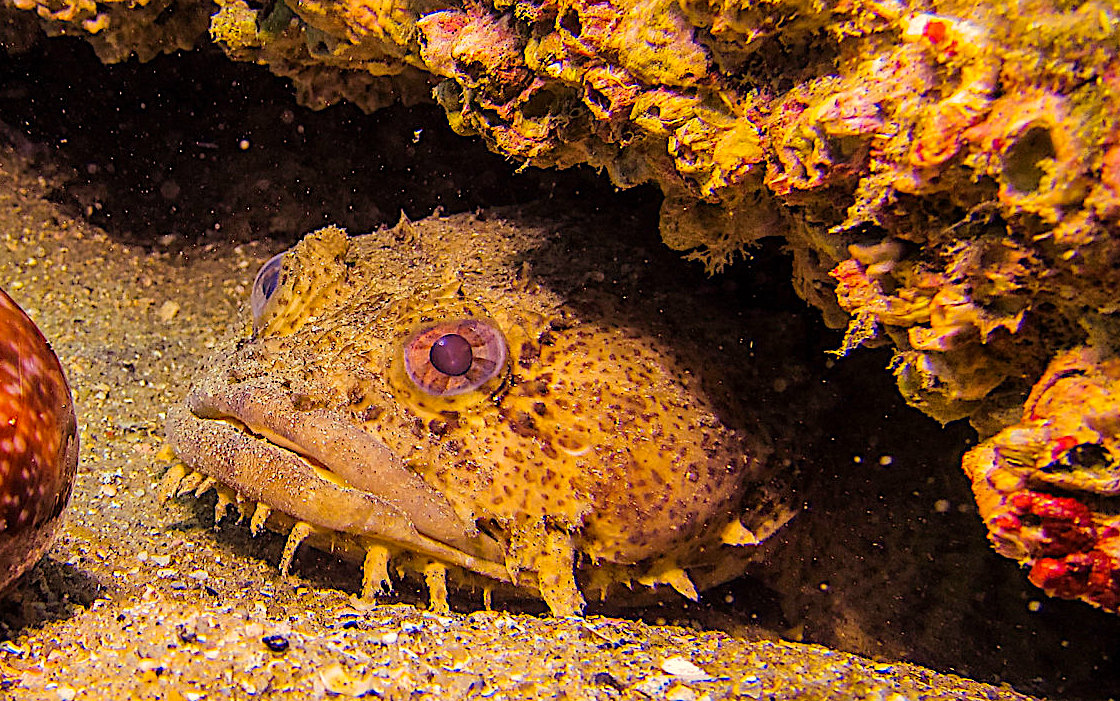Are Fish Noisier Today Than They Were 70 Years Ago?

Using a new acoustic recording device, a research team captured the underwater soundscape and compared it to recordings that the U.S. Navy made decades ago.
Ever caught a croaker and heard that weird purring sound? Croaker, along with many other fish such as drum, toadfish and grouper, make noise by way of oscillating their swim bladder.
Research Need
Researchers wanted to find a way to capture the “soundscape” of fish in the marine environment without being limited to a fixed location. Ambient sounds and communication within and across species are important to fish and invertebrate survival. Monitoring a waterway’s soundscape can be a useful, harmless, and inexpensive way to complement traditional survey methods in order to understand the presence and activities of a species.
Until recently, the only method of capturing and recording fish sounds has been to use passive recording devices, like hydrophones and dataloggers, fixed to a specific location. While these instruments are easy to place and remove for study, the chance that they will capture an extended recording of moving fish is relatively small.
What did they study?
Scientists at East Carolina University deployed a wave glider within Onslow Bay on the North Carolina coast. This ocean-going platform was equipped with sensors to track environmental conditions, monitor and record sound, and identify tagged fish. A system of wings or fins below the platform converts wave energy into forward propulsion, and solar panels power the sensors
The team mapped the variation in sounds and species in recordings, and then compared the sounds they recorded to those recorded by the U.S. Navy in the same region over 70 years ago, to see if the sounds had changed.
What did they find?
The team first noticed that there were more fish sounds at night than during the day. The collective sounds they identified included weakfish “purrs,” unidentified drum or croaker “grunts,” and occasional cusk-eel “chatters.” They also could identify individual fish calls, as well as picking up reef sounds that they were unable to identify.
The researchers additionally could identify grouper “growls,” black drum “booms,” silver perch “clucks,” sea robin “honks,” and oyster toadfish “boat whistle” calls when the recorder was in deeper waters.
When the scientists compared the recordings to those the U.S. Navy made using hydrophones in 1947, they detected an unknown “grunt” sound that had interfered with the US Navy’s surveillance, which the researchers hypothesize was likely from banded drum.
Originally, the Navy made the recordings in an effort to detect ships and submarines, but the fish noise interfered with the effectiveness of their work.
In addition, the team showed that the sound pressure level has increased compared to the Navy’s original recordings. This could indicate that the “singing” fish have moved into shallower waters in the last 70 years.
So what?
Overall, this study showed that using a remote moving wave glider is an effective way to capture fish sounds during an extended period of time over a wide area, as opposed to attaching a recorder to a stationary location. Passive acoustic monitoring from mobile platforms can locate and map fish choruses, identify areas of fish habitat, and locate previously unknown reefs and fish spawning areas.
Reading
Luczkovich, J.J. and Sprague, M.W. 2022. Soundscape Maps of Soniferous Fishes Observed From a Mobile Glider. Frontiers in Marine Science. 9: 779540. https://doi.org/10.3389/fmars.2022.779540
This work was supported by National Science Foundation Major Research Instrumentation Grant “MRI: Acquisition of an Acoustic Wave Glider” (Grant No. 1429315) to the co-authors, Roger A. Rulifson and John P. Walsh of East Carolina University. They received matching funding from the East Carolina University Division of Research and Economic Development (REDE), The Thomas Harriot College of Arts and Sciences, The Institute for Coastal and Science and Policy (ICSP), and The Department of Biology, and the Department of Physics at East Carolina University.
by Christine Ryan
Lead photo: oyster toadfish. Credit: Allison Scott/NOAA.
The text from Hook, Line & Science is available to reprint and republish at no cost, but only in its entirety and with this attribution: Hook, Line & Science, courtesy of Scott Baker and Sara Mirabilio, North Carolina Sea Grant.
- Categories:



